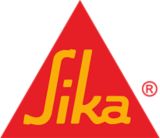
Sikaflex®-552
Assembly adhesive with reduced substrate preparation
Sikaflex®-552 is a high-performance elastic gap-filling 1-component Silane Terminated Polymer (STP). It is suitable for bonding various materials and in many cases adheres with limited surface preparation.
- Bonds well to a wide variety of substrates with minimal pre-treatment
- Capable of withstanding dynamic stresses
- Isocyanate- and solvent-free
- Can be painted
- Good aging and weathering resistance
- Non-corrosive
- Silicone- and PVC-free
Sikaflex®-552
Less prep, more production! 🏡
Sikaflex®-552 is our high-performance, elastic structural adhesive used in high-volume window and door assembly.
Dynamic stresses are no problem, and Sikaflex®-552 bonds to a wide variety of substrates, including metals, ceramics, and plastics.


